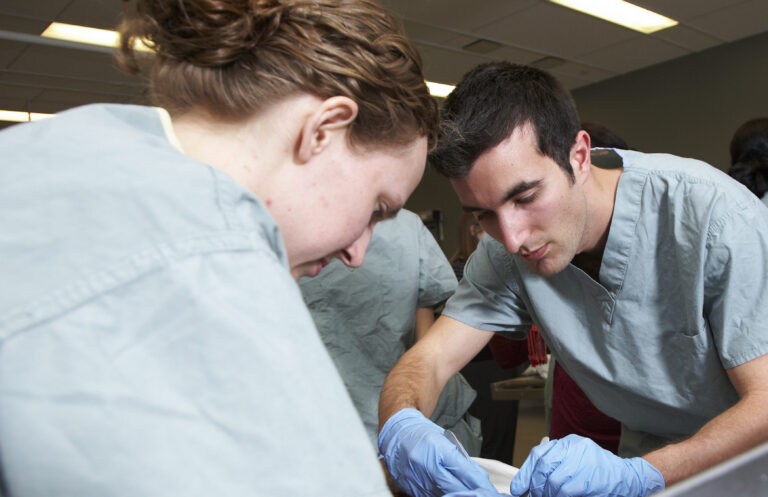History of the Program

The Education Program in Anatomy was originally founded in 1966 as the Department of Anatomy. It was developed then to serve the needs of medical students as a key component to the innovative Problem Based Learning (PBL) curriculum employed by the new School of Medicine.
The PBL curriculum had no set courses and no set lectures. Learning was purely self-directed and was achieved through the exploration of clinical problems. Each clinical problem featured several identified medical facets or disciplines such as Epidemiology, Physiology, Pharmacology and Anatomy. Each facet required the students’ extensive exploration. The Anatomy Lab was essential for this exploration, and was the creation of the Department’s founding Chair, and one the founders of the McMaster School of Medicine itself, Dr. James E. Anderson (1966-1975).
The Anatomy Lab that Dr. Anderson devised was so unique and important to the PBL curriculum at the time as to be McMaster Medicine’s first “Homebase”. Students began and finished their academic day in the lab. Forgoing the laborious dissections of traditional medical schools, the Anatomy Lab instead used a large number of pre-dissected specimens complimented by models, medical images and demonstrations to teach anatomical concepts from a variety of learning angles. Everything was laid out and accessible for students to learn from. The Anatomy Lab has since served as a model for other medical schools. Having remained relatively unchanged for thirty years, it is a testament to the creative and innovative spirit that founded the undergraduate MD program.
Dr. Anderson’s period as Chair was followed by Dr. Wazir Pallie (1975-1983) and Dr. David Carr (1983-1988). In 1988 the Department of Anatomy was absorbed into the new Department of Biomedical Sciences, intending to consolidate basic science education and research strengths into one large department with all the resources necessary to pursue excellence in both research and teaching. Biomedical Sciences amalgamated what was then Anatomy and Neuroscience into one large unit with three divisions: Anatomy and Experimental Morphology, Neuroscience, and Physiology and Pharmacology. Dr. Alan J. McComas was the first Chair of the Department of Biomedical Sciences, followed by Dr. Alexander K. Ball in 1993.
In 1998, Biomedical Sciences was dissolved with the former Division of Anatomy and Experimental Morphology joining the Department of Pathology and Molecular Medicine. Under the Department of Pathology and Molecular Medicine, the new Division of Anatomy underwent a second name change to become the current “Education Program in Anatomy” under Education Services.
The Education Program in Anatomy was initially chaired by Dr. Richard Butler, followed by Dr. Hallie Groves, and again by Dr. Alexander K. Ball. Dr. Bruce Wainman, assistant professor in Obstetrics and Gynecology began his tenure as Chair of the Education Program in Anatomy in 2005.

Director
Today the lab serves a growing number of students and educational programs, from undergraduate students in Health Sciences and Kinesiology to the Rehabilitation Sciences, Medicine, Nursing, Midwifery, and Engineering. With the different curricula of these new programs and the growing number of learners in the lab, the Education Program in Anatomy has already begun an ambitious investigation into how best to present anatomy to each program. With more students positioned in clinical placements away from campus, we are beginning to address the enormous need for on-line anatomy material while maintaining and improving the Lab’s existing format.
The Education Program in Anatomy plays a central role in the development of Surgical Skills Centre for both undergraduate and graduate medical training. Located in McMaster University Medical Centre, across the hall from both the current Clinical Learning Centre and proposed Practical Skills Lab, the addition of the Surgical Skills Centre to the Education Program in Anatomy has completed a suite of one-stop allied health training labs. This suite of training labs would add enormously to the wide range of excellent medical training at McMaster University.


